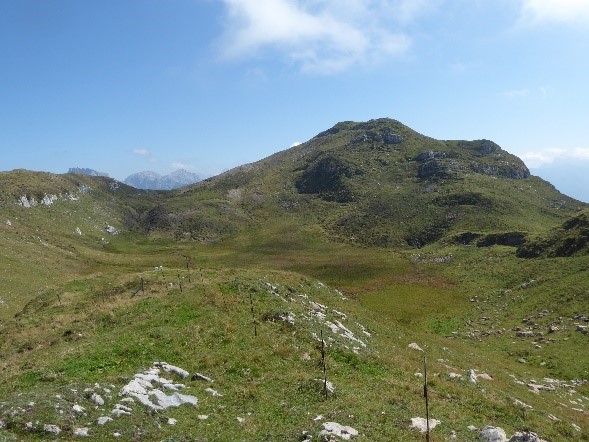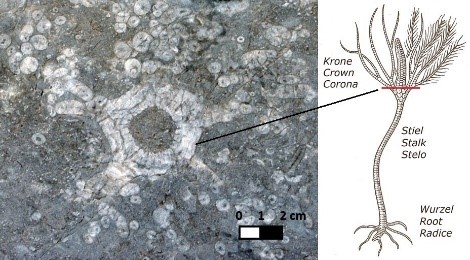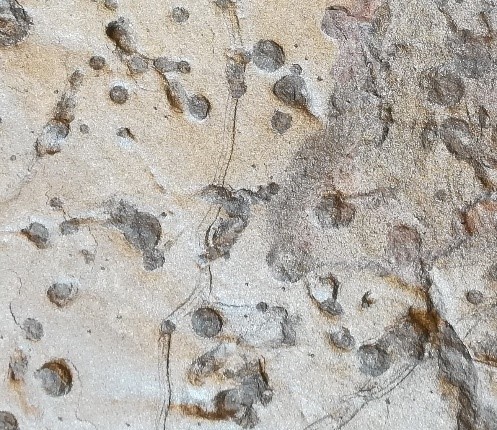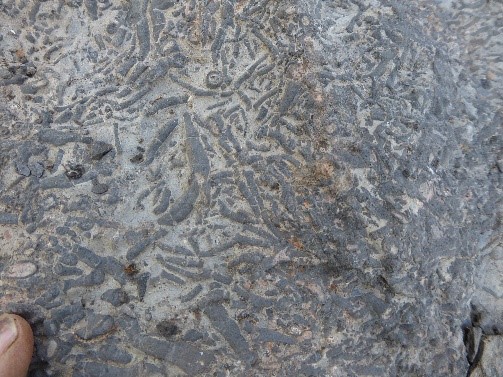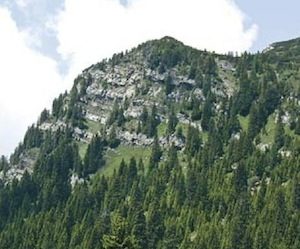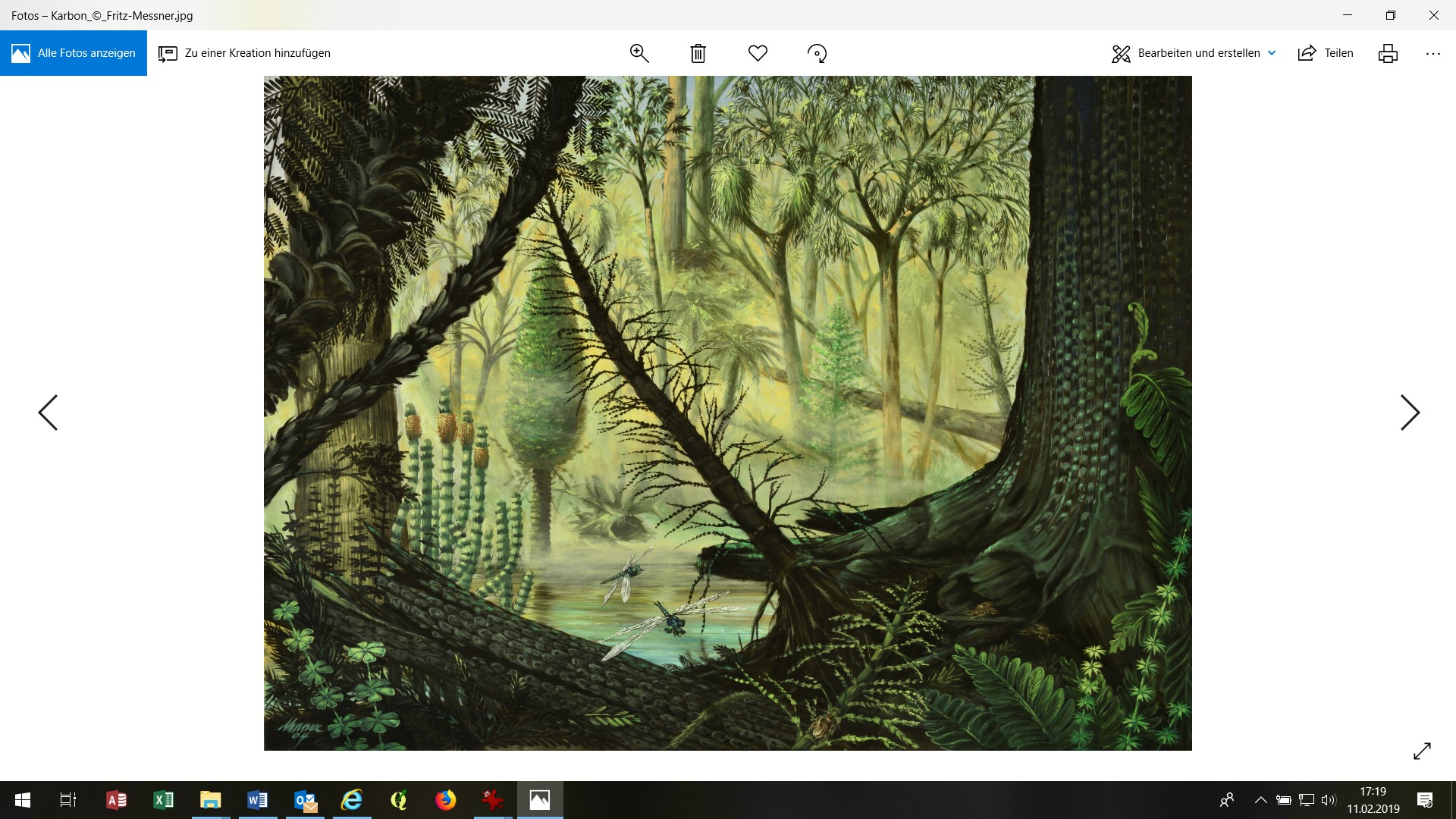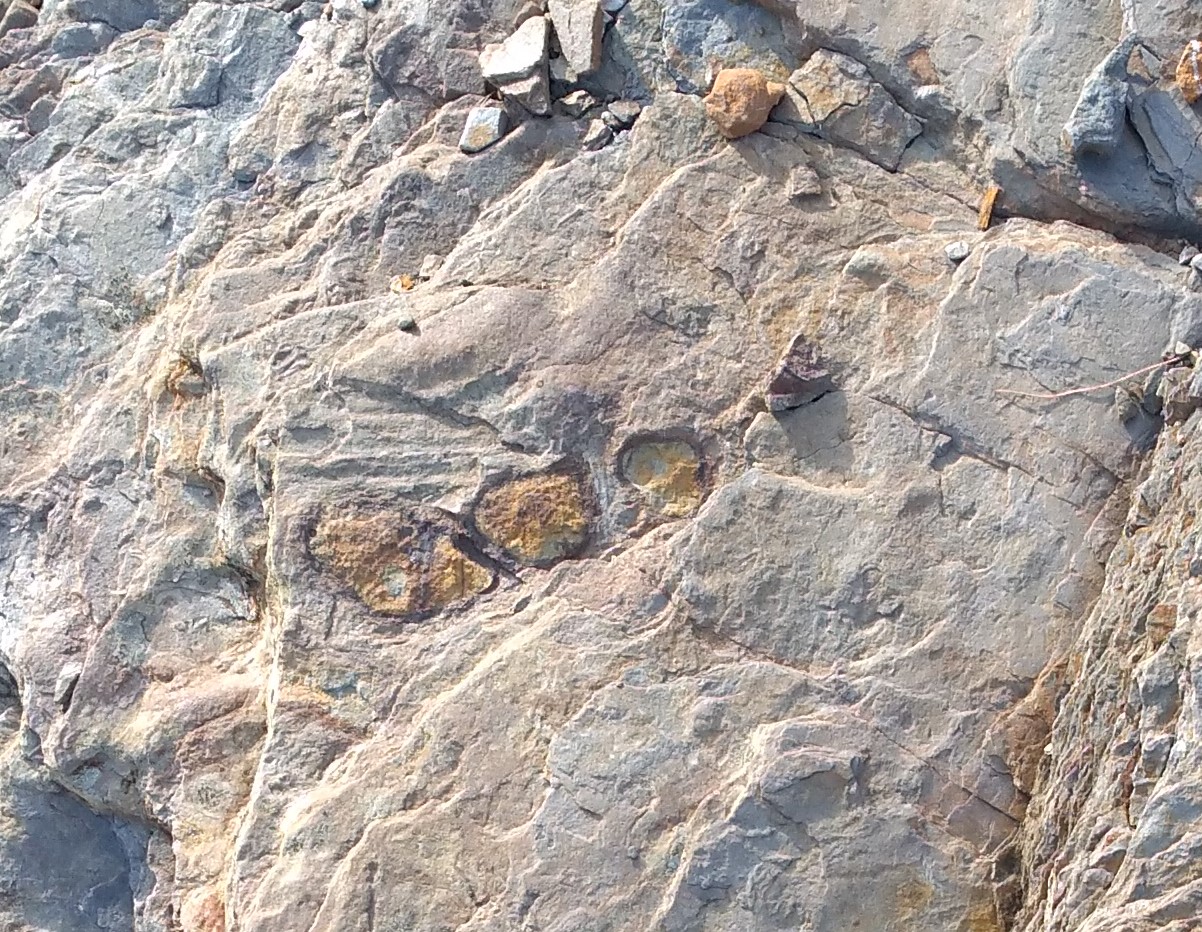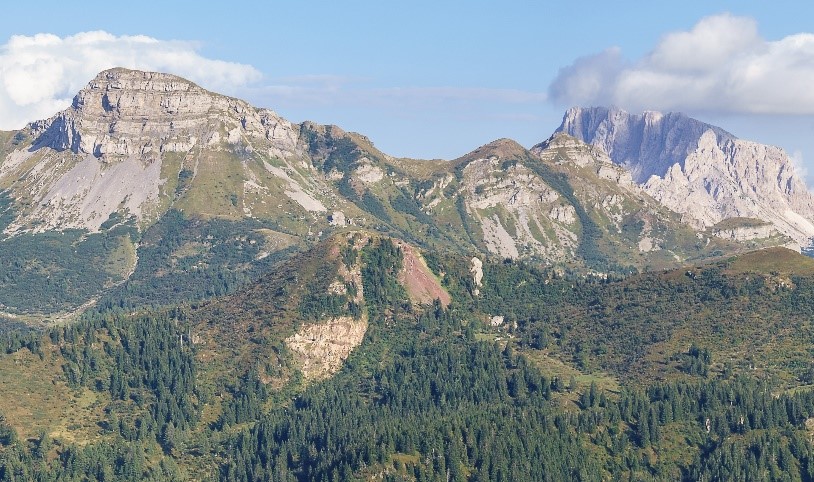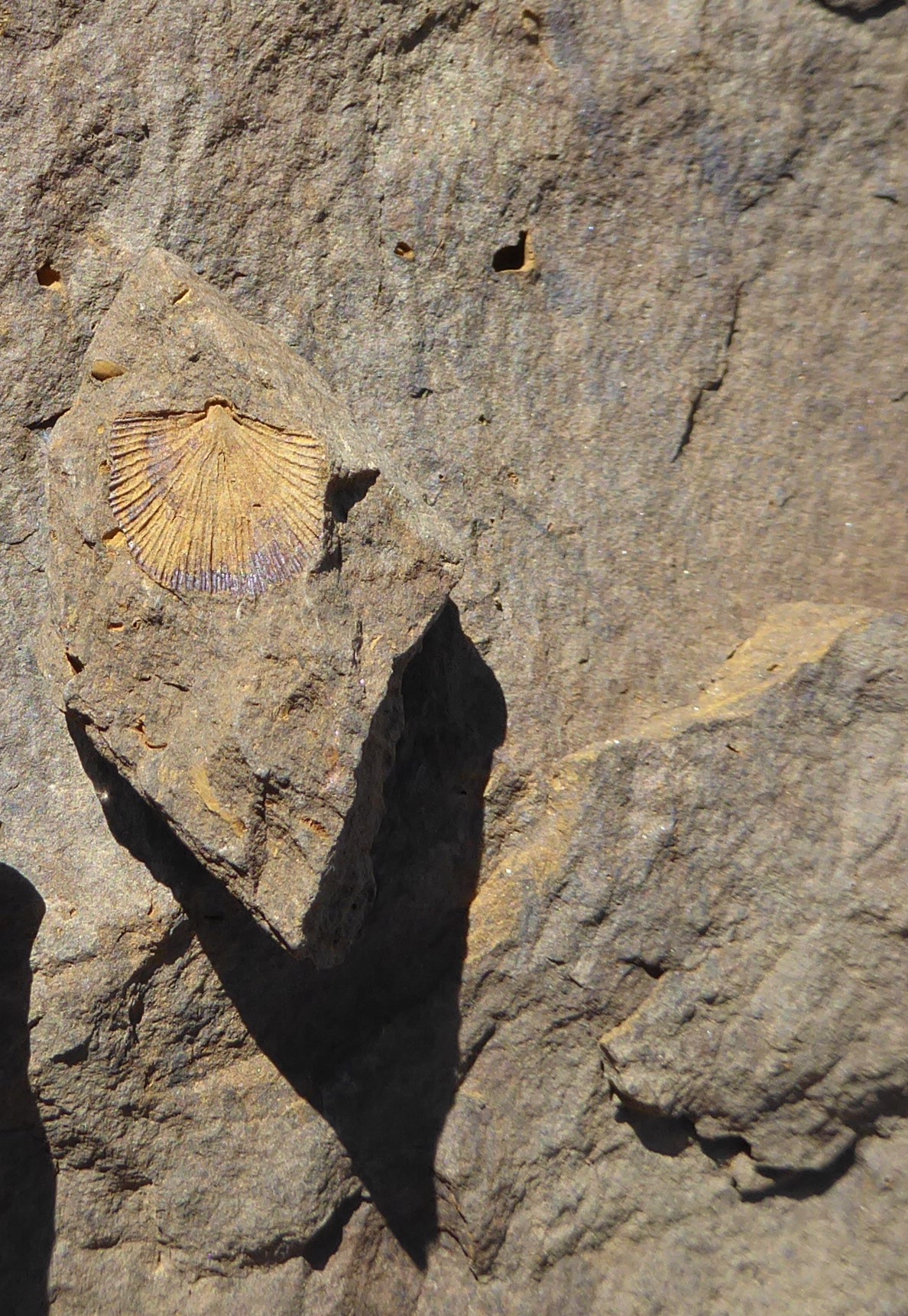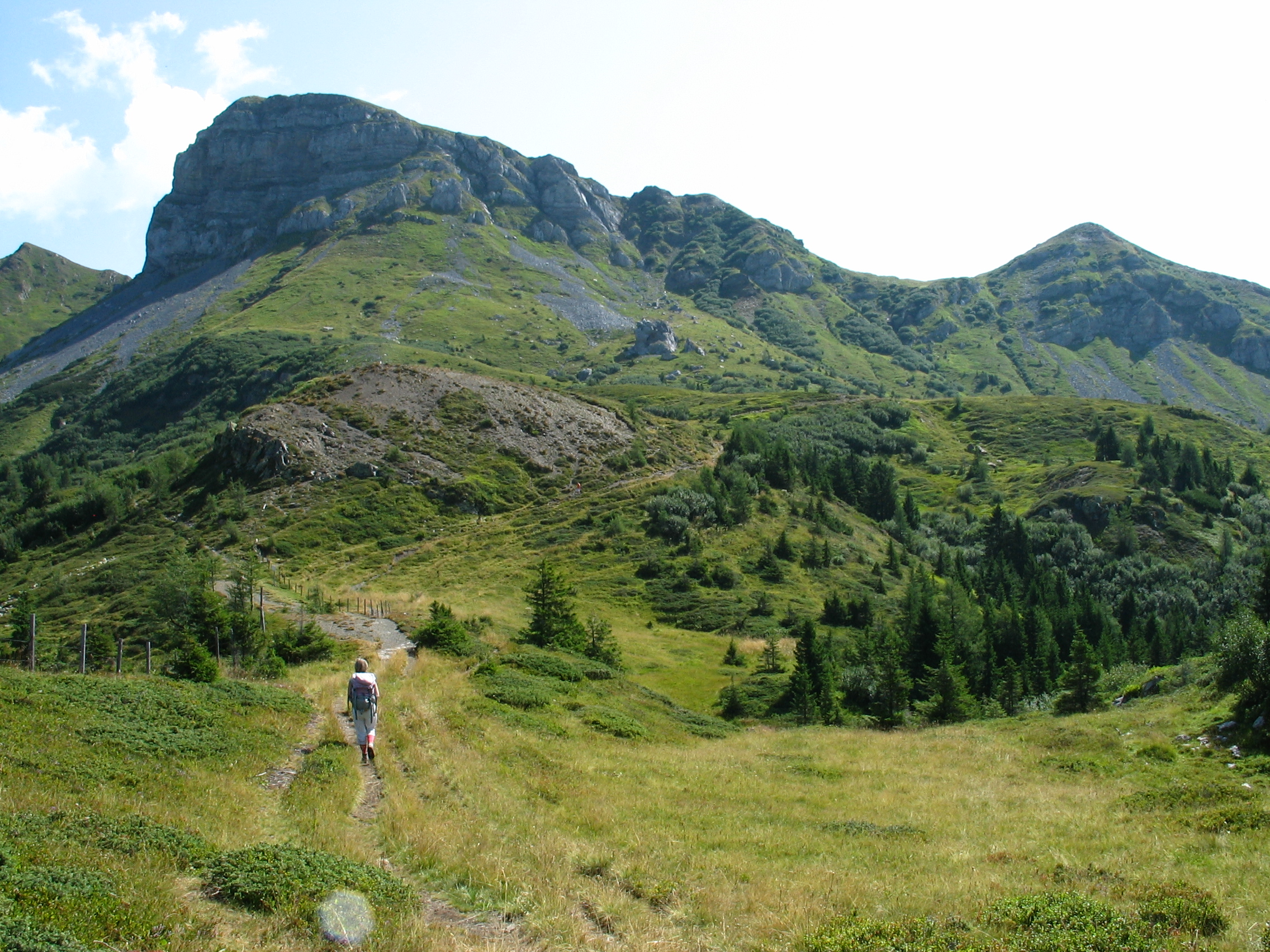Around Lodintörl it is possible to observe the imposing, almost white, limestone relief of the Auernig Formation, or what is presumed to have been a limestone reef. Here, in a marine habitat characterized by optimal conditions, living organisms were able to reproduce in large quantities and contribute to the formation …
Read more Peaks and hollows
In the limestone rocks at this stop there are sections through crinoids (sea lilies), the commonest fossils of the Auernig Formation after the calcareous algae which were mostly echinoderms growing firmly attached to the bottom and which still populate our seas today. They consist of a root, a stem and …
Read more “Animal” Flowers
The slabs of rock with a polished surface observable at this point also belong to the Auernig Formation. On these rocks dark circles about one centimetre in diameter can be frequently found and are sections of excavation tracks (Skolithos) of invertebrate animals that once populated the sedimentary areas close to …
Read more Tracks in the rock
Here you can see the most important limestone producers of the Auernig Formation, the calcareous algae. To perform photosynthesis, these organisms needed sunlight and therefore lived in the sea at depths of between ten and thirty metres. When they died, their calcareous skeleton disintegrated, mostly becoming a lime-based paste. The …
Read more Limestone producers
On the rock wall at the edge of the path, you will come across rocks of the Auernig Formation dating back about 300 million years ago and which formed the sea coast at a time when it was very populated with life. These rocks are made up of marine and …
Read more Sea and land carved in stone
At this point it is possible to observe a fold in the rock, originating from the Alpine Orogenesis. As the sketch shows however, it is affected by the phenomenon of erosion. In rocks there are two types of deformation. In detail, massive rocks such as limestone deform with fracture, are …
Read more The fold in the rock
On this spot you will find a rock formation that is common between Pramollo and the Zollnersee lake bearing round inclusions similar to nuts, with dimensions that can reach those of an egg in rocks with a fine consistency. These are called concretions and are not fossils, but anorganic formations. …
Read more Petrified eggs?
On the western side of Mount Cordin there is a clearly visible layered structure, dubbed by the locals “The fold in the form of a 2” for its characteristic shape. Its structure and excellent visibility are provided by the red rocks of the Val Gardena Formation, folded to form a …
Read more The “2-shaped” fold
In the next 150 metres you will travel through 150 million years of Earth’s history. Look closely at the colours of the rocks! There are some that are a deep red and that settled on gigantic alluvial plains near the coasts about 260 million years ago, when the environment was …
Read more 150 million years in 150 steps
On the south-west slope of the Pale di San Lorenzo the deformations undergone by the Permo-Carboniferous rocks during the Alpine Orogenesis are clearly visible. These very evident folded limestone layers are sometimes twisted and sometimes interrupted and / or displaced by sub-vertical faults.
Read more Overview of the Pale di S. Lorenzo geological fault

